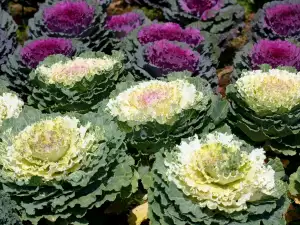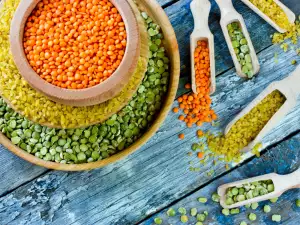Everyone knows how healthy vegetables are and how eating them grants us good health and longevity. A common vegetable used in many cuisines is the green onion, which the majority of people think is nothing special and never consider that it's actually incredibly rich in valuable substances and therefore extremely healthy.
History of Green Onions
This unassuming and at the same time extraordinarily valuable plant was first cultivated in Asia. Herdsmen were the first to discover that its bulbs were edible. Once they reached Egypt, green onions began to be grown as a cultivated plant.
An interesting fact is that its healing properties were discovered by the ancient Greeks, while Roman soldiers ate it because they believed that it boosted their endurance.
Composition of Green Onions
Green onions contain a serious dose of beneficial substances and vitamins. They are rich in fibers and sugars, the best represented vitamins are group B vitamins, vitamins C, D, E and K1.
Among the minerals, the greatest quantities are of iron, potassium, calcium, copper, manganese, magnesium, sodium, selenium, zinc and phosphorous. Green onions also possess numerous valuable amino acids. Strangely enough, the quantities of sugar in green onions exceed those found in pears and apples.

Growing Green Onions
Green onions can be grown in indoor facilities, as well as outdoors. Usually they are companion plants to tomatoes, eggplants, cabbage and peppers. Preparation of the soil consists of fertilizing and forming the space.
The bulbs need to be planted at a depth of 2" and at a distance of 2" from each other. Planting can be done during fall (end of September until the end of November), thereby guaranteeing fresh green onions for the spring months. Green onions can be planted in early spring as well but in that case you can expect for the harvest to be ready in May and June.
After arranging the bulbs by hand at a depth of 2" you need to cover them with soil. The soil needs to be kept clean of weeds and loose by using herbicides and regular tilling.
Once the green onion stalks reach normal sizes, it's time to collect them. The onions are plucked out and cleaned of soil, old layers and yellow stalks.
Cooking with Green Onions
Green onions find wide application in the culinary arts. They are an invariable part of lettuce salad, a typical spring dish. In combination with cucumbers and radishes, seasoned with salt, vinegar and oil, the result is a truly unbelievable salad.
Green onions can be used as a substitute for regular onions when kneading mince for meatballs, in rice dishes, soups and stews.

Lamb meat, in combination with green onions, is a genuine sensual delight. One of the easiest and tastiest ways to prepare green onions is to use them in combination with scrambled eggs. They can be used in all sorts of sauces, pitas and phyllo pastries.
Check out this amazing and very easy recipe for buns with green onions.
Ingredients: 2/3 cup boiling water, 3 tbsp oil, about 1 1/5 cups flour, salt and 1 bunch of green onions.
Preparation: Mix the flour with the salt and pour on the water. Gradually knead a dough and leave it to sit for about 1 hour. Then cut it into 7-8 pieces. Roll out each one thinly, smear it with a little oil and sprinkle with finely chopped onions.
Wrap them into rolls and form a snail shell form. Formed as they are, roll them out and bake on both sides in a lightly oiled pan. Serve right away.
Benefits of Green Onions
There are a series of health benefits from green onions. They are rich in phytoncides which protect the body from viral infections, while the chlorophyll in them is good for blood circulation.
Green onions are an exceptionally beneficial vegetable for conditions such as spring fever, dizziness, sleepiness, avitaminosis. They contain substances that fortify the heart muscle and blood vessel walls.
The high levels of calcium and phosphorous in green onions have a beneficial effect on the teeth. Green onions have a low glycemic index, which is why they are recommended for consumption by those who exercise and those who want to lose weight.
They're also good for consumption during cold and flu because the phytoncides react with destructive force toward disease-carrying microorganisms. It's crucial to note that the zinc in green onions is a lot higher in comparison to other green vegetables.
Zinc is a very important element - a deficiency of it leads to brittle nails and hair loss, a negative effect on the female reproductive system, while in men it affects testosterone and sperm activity.
Green onions protect against atherosclerosis, while the quantities of calcium and sodium in it aid in getting rid of excess fluids from the body. The presence of iron helps raise hemoglobin levels.
Some of the latest studies have proven that green onions contain quercetin, known for being a potent antioxidant that fights oncological diseases.
Dangers of Green Onions
Green onions are not suitable for consumption by people suffering from colitis and gastritis because they increase stomach acidity and thereby cause even further irritability. Individuals with a more sensitive gastrointestinal lining should also avoid eating them. Those suffering from diabetes and liver diseases should also avoid it.




















Comments